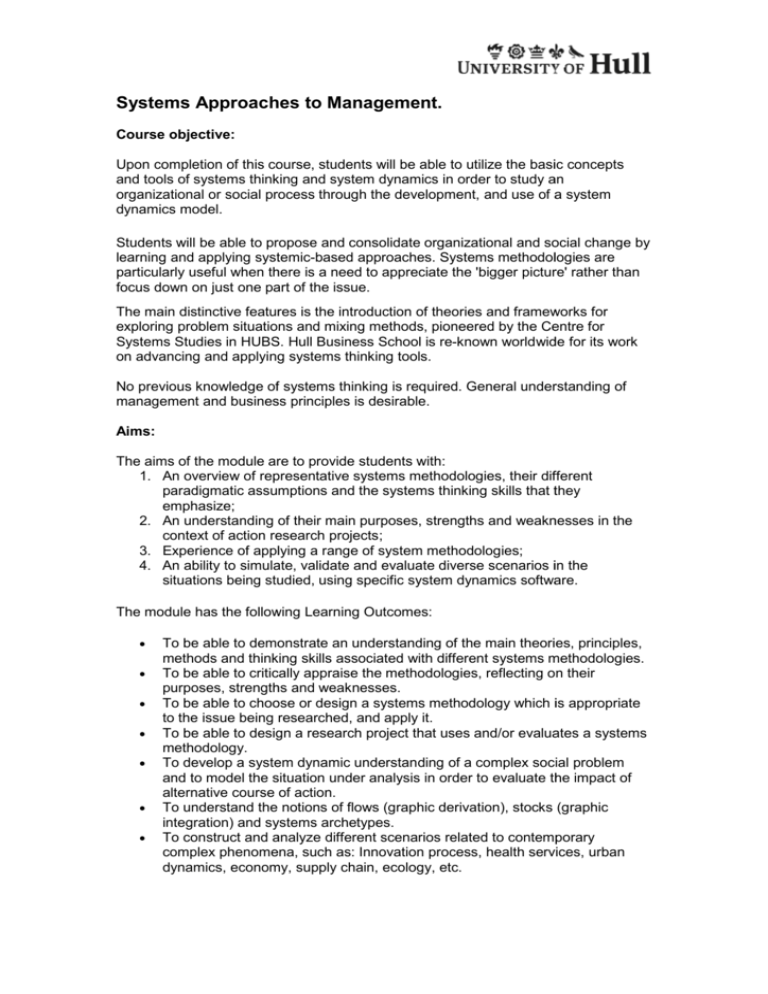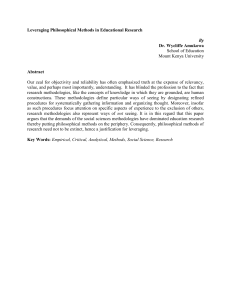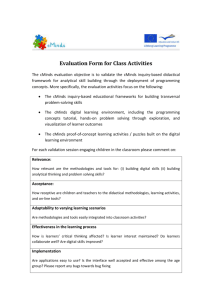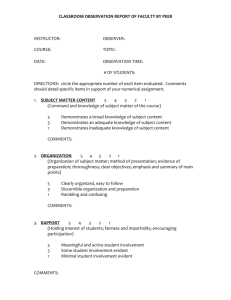Systems Approaches Approaches to Management.
advertisement

Systems Approaches to Management. Course objective: Upon completion of this course, students will be able to utilize the basic concepts and tools of systems thinking and system dynamics in order to study an organizational or social process through the development, and use of a system dynamics model. Students ts will be able to propose and consolidate organizational and social change by learning and applying systemic-based systemic based approaches. Systems methodologies are particularly useful when there is a need to appreciate the 'bigger picture' rather than focus down on just one part of the issue. The main distinctive features is the introduction of theories and frameworks for exploring problem situations and mixing methods, pioneered by the Centre for Systems Studies in HUBS. Hull Business School is re-known worldwide wide for its work on advancing and applying systems thinking tools. No previous knowledge of systems thinking is required. General understanding of management and business principles is desirable. Aims: The aims of the module are to provide students with: 1. An overview of representative systems methodologies, their different paradigmatic assumptions and the systems thinking skills that they emphasize; 2. An understanding of their main purposes, strengths and weaknesses in the context of action research projects; projects 3. Experience of applying a range r of system methodologies; 4. An ability to simulate, validate and evaluate diverse scenarios in the situations being studied, using specific system dynamics software. The module has the following Learning Outcomes: To be able to demonstrate an understanding of the main theories, principles, methods and thinking skills associated with different systems methodologies. To be able to critically appraise the methodologies, reflecting on their purposes, strengths and weaknesses. weak To be able to choose or design a systems methodology which is appropriate to the issue being researched, and apply it. To be able to design a research project that uses and/or evaluates a systems methodology. To develop a system dynamic understanding understanding of a complex social problem and to model the situation under analysis in order to evaluate the impact o of alternative course of action. To understand the notions of flows (graphic derivation), stocks (graphic integration) and systems archetypes. To construct struct and analyze different scenarios related to contemporary complex phenomena, such as: Innovation process, health services, urban dynamics, economy, supply chain, ecology, etc. Course topics and subtopics: 1. Intervention processes 1.1 Concepts and basic elements 1.1.1 Problem situations and complexity handling 1.1.2 Problem solving components: context, content and process 1.2 General description of intervention process 1.2.1 Intervention process stages 1.2.2 Participants ants of an intervention process 2. Types of Intervention 2.1 Typology of situations under study and intervention approaches 2.2 Research as an intervention process 2.3 Consultancy processes as intervention processes 3. Systems methodologies hodologies for intervention 3.1 General description of systems methodologies (choose two): Soft Systems Methodology (SSM), Viable System Model (VSM), Critical Systems Heuristics (CSH) CSH) and Interactive Management (IM) 3.2 Systems methodologies and intervention processes 3.3 Systems methodologies selection 3.4 Related methods and tools 4.. System Dynamics : Antecedents Antecede and foundations 4.1 .1 System Dynamics evolution: Electronic systems – industrial systems – urban systems – global systems. 4.2 .2 Counterintuitive behavior, causality, endogenous endogenous and exogenous variables. 4.3 Event – pattern – structure – behavior. 4.4 .4 Positive and negative relations between variables,, feedback cycles and their associated behaviour. behaviour 4.5 Behaviors associated iated to the fundamental cycles: Exponential growth, goal seeking, S-shaped growth, oscillation, growth g and collapse. 5. Contemporary phenomena seen as dynamic systems. 5.1 Dynamic modeling ng for population issues. 5.2 Dynamic modeling for inventories. 5.3 Dynamic modeling for epidemics and innovation processes. 5.4 Dynamic modeling for supply chains. 5.5 Dynamic modeling for drugs abuse. 5.6 Dynamic modeling for societal problems problems related to the stages of recollec recollection, agriculture and industrialization. Considering the group characteristics and the resources available, the lecturer might consider in the design of the course the following learning resour resources: teacher and students' expositions, collaborative activities inside and outside the classroom, group discussions and simulation practices, among others. It is expected that the students will develop collaboratively different simulation models in order to cover the different stages involved in the System Dynamics modeling process. Total 30 hours Bibliography: TEXT BOOKS: Jackson, M.C., “Systems Systems Thinking: Creative Thinking for Managers Managers”, John Wiley, Chichester, England Sterman,, John D. W., “Business Dynamics: Systems Thinking and Modelling for a Complex World”, World” McGraw-Hill, Support material: Software: Ithink versión 9. Isee Systems Inc. http://www.iseesystems.com/ Ventana Systems Inc. http://www.vensim.com/ http





